Is it possible to install a gas boiler in the bathroom: norms and rules
Owners of country real estate at the stage of designing a heating system very often have a question: are there regulations allowing the installation of a gas boiler in the bathroom or should such an arrangement be immediately excluded?
You won’t believe it, but the question is really relevant, so next we will help you figure out whether there are any restrictive standards or not, and also whether it is worth entering into disputes with gas workers in court for the right to install a boiler in the bathroom or is this wasted time.
The content of the article:
Why do you need a heating boiler in the bathroom?
Very strict standards and regulations apply to gas-using equipment. They describe literally every installation step and every square meter required to obtain permission to put the device into operation.
It is most logical to install gas boiler in the boiler room, however, not every owner of a house or apartment can afford to allocate extra squares. Therefore, it most often takes its place in the kitchen.
But now there is a fashion for stylish modular sets, into the design of which boilers do not fit well. In addition, due to the savings of all the same square meters, not everyone can afford a separate dining room for a noisy feast, and again, the boiler can prevent active gatherings with friends.
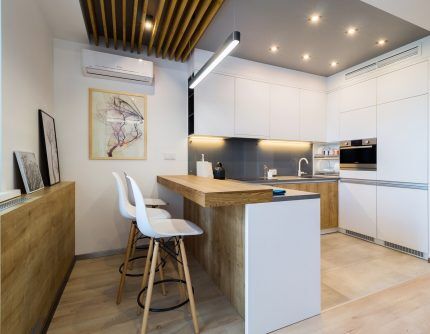
And you never know why the owner’s kitchen is not suitable for installing boilers in it. Maybe it’s a lack of square meters, a studio apartment, fear of a fire or the fact that a small child will fit into the appliance when sharing a cooking space, and so on.
The bottom line is that, in fact, many people want to use the bathroom as a boiler room.
Rules and regulations
Position SNiP 2.04.08-87 on the topic of such placement of gas-using equipment was categorical - 100% prohibited. However, as in subsequent editions, except for SNiP for 2002. Experts have always considered such placement unacceptable.
And the last document that put an end to this issue is still valid today SP 402.1325800.2018 “The buildings are residential. Rules for the design of gas consumption systems." It states in paragraph 5.6 that gas-using equipment cannot be placed in bathrooms and toilets.
Please note that this document is mandatory for use, and, in principle, no more documentation is required regulating the rules and regulations for the installation of such devices. It is also worth saying that the instructions for some boilers contain instructions prohibiting their placement in the above premises.
Reasons for the ban on boiler installation
Everything is clear with the documents, but what were those who developed the rules and regulations guided by and are there any reasonable explanations for why a boiler cannot be installed in a bathroom and for what reason?
Gas equipment of any type has metal elements that can oxidize upon contact with a humid environment.
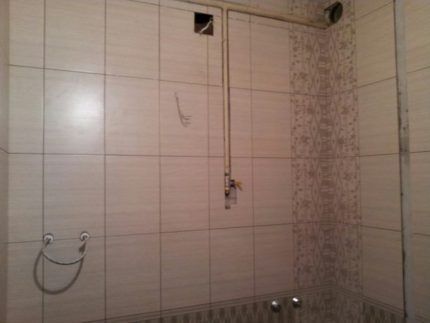
Failure to comply with these rules is already one of the main dangers of rapid equipment wear. But, in addition, modern devices have electronics that will withstand contact with water very difficult or not at all.
Naturally, all these factors, plus a constant change in temperature, will negatively affect the boiler, but, most likely, they will simply disable it. But if oxidation of contacts occurs, for example, thermocouples, this is a clear threat of explosion.
However, not every bathroom will meet the same requirements. SP 402.1325800.2018 By:
- volume of room for gas-using equipment;
- the presence of an easily removable window structure;
- natural ventilation with calculated exhaust in a three-fold volume of air exchange;
- glazed window opening with an area of 0.03 cubic meters. m per 1 cubic meter m. room volume.
And so on.
Codes of rules and other documentation of this nature are developed by specialists, based on many years of research and accurate calculations.
Ways to get around the ban
Some particularly smart home owners are trying to circumvent this ban.
Even at the design stage, a spacious kitchen is provided in which gas equipment is installed and registered. And after commissioning, plasterboard partitions are installed and plumbing fixtures are installed in the resulting room.
Of course, this is done mainly in private houses; in apartment buildings, such redevelopment is most often technically impossible.
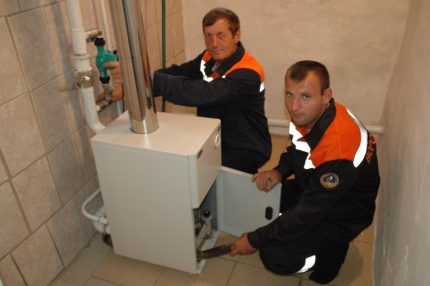
But at the same time, the above reasons already seem reasonable enough not to do this. You also need to take into account that modern gas boilers have a connection to electricity that requires increased protection against electric shock even in a normal room, not to mention a humid environment.
You must understand that regulatory requirements for the safety of installation of gas-using equipment are developed for the benefit, protection of health, life and property of people and they are quite justified from a technical point of view.
Responsibility for violating the ban
If you think that boiler placement contrary to the building regulations, it will cost you at most the requirement to do everything as needed, you are wrong.
According to Code of Administrative Offenses of the Russian Federation Article 9.4. such actions are qualified as a violation of requirements in the field of building codes and regulations, which threatens, at a minimum, with a fine.
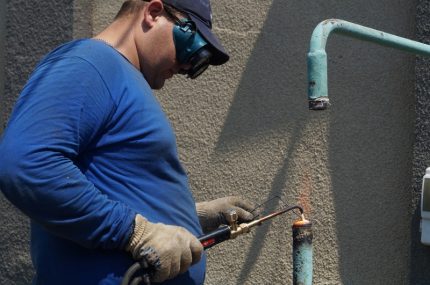
By the way, such well-known manufacturers of boiler equipment as Valliant, Baxi, and many other world-famous companies, in most cases, remove the warranty on the microcircuits of their devices installed in a bathroom or other room with high humidity.
And here is another answer to the question: is it possible to install a gas boiler in a bathroom or bathroom - no one wants to lose warranty repairs for expensive equipment.
If you really want a boiler in the bathroom?
In general, it is useless to argue with gas workers; they almost never cooperate on this issue. But if you wish, you can try to get official permission.
To do this, you should draw up an official application in 2 copies addressed to the head of the gas supplier company. A copy of the floor plan must be attached to the application.
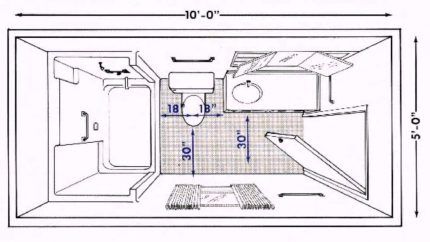
Your application must be registered by the receiving party, and a certificate of acceptance must be affixed to your copy. The organization will send a response with a mandatory legal justification for the refusal (or permission) within 15 days.
With this document, if the decision does not satisfy you, you can file a complaint with the court, but, as a rule, the court leaves such claims unsatisfied. So there is no need to delude yourself.
Conclusions and useful video on the topic
Where and how can you install a gas boiler? About bathrooms and more:
We looked at why it is impossible to install a gas boiler in a bathroom, both from the point of view of the law and with concern for your safety, as well as the durability of the equipment you purchased. Remember that saving space or aesthetics is not a prudent reason to risk your life.
Where is your gas boiler installed? Would you like to move it into the bathroom or do you already have such experience? Share with us in the comments and of course ask questions about the topic.




If I want to install an AOGV with a mechanical automatic machine, is it possible to install it in the bathroom?
I am also interested in this question. Apparently we won't wait for an answer here. We are talking everywhere about modern boilers. AOGV suits me quite well.
Where did you install?
In fact, a bathroom with an installed boiler (floor-standing) is the warmest and driest, because it has the necessary ventilation fully installed. There is a window. If the boiler is installed in the kitchen (which is allowed), then it will be in a more aggressive environment. In the kitchen, in addition to steam, there is a suspension of oils, which easily settles on the kitchen cabinets despite the presence of an exhaust hood and ventilation. Accordingly, all this will settle on the boiler equipment.
And, by the way, why can’t new generation boilers with closed combustion chambers, which take air from outside and send it there, be installed in bathrooms and other sanitary rooms?
The first question is why the toilet cannot stand in the room where the gas boiler is installed.
Did people draw up new rules and care about boiler warranties? This is not serious.
Even if the thermocouple oxidizes, the boiler will shut down and cut off the gas supply.
And if we talk about modern boilers with a closed combustion chamber and the installation of a gas analyzer, these requirements need to be reconsidered. There are more aggressive emissions in the kitchen.
In the 2002 document it was possible, but what to do if someone had a boiler installed in 1974 and has a boiler in the bathroom. What changed. Was the level of Automation higher and more reliable than now? The modern document was prepared by new young specialist bachelors. I think that's the problem.